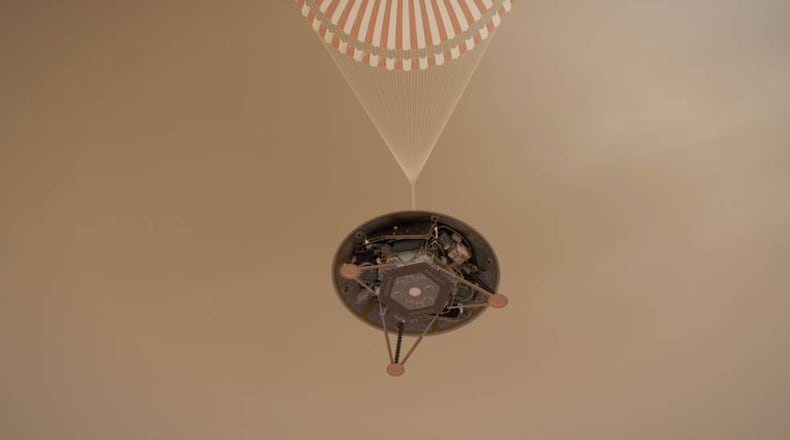NASA's InSight Mars lander is nearing the Red Planet after a 295 million-mile, 7-month voyage across the solar system to reach one of Earth's closest neighbors.
The spacecraft, which launched on May 5, will have traveled more than 300 million miles by the time it reaches Mars on Monday, Nov. 26, and will attempt to set a lander gently on the planet’s surface, in the first Mars landing in six years, according to NASA.
If all goes as planned, the InSight lander should touch down on the Martian surface just before 3 p.m. EST Monday.
The $850 million InSight mission will study the deep interior of Mars and will help scientists understand the formation and early evolution of, not just Mars, but all rocky planets, including Earth – but only of the rover can land -- NASA said in a press release on the mission.
Only 40 percent of the missions ever sent to Mars have successfully landed on the planet, and the U.S. is the only nation to land a craft on the surface, NASA officials said. “Since 1965, it (the U.S.) has flown by, orbited, landed on and roved across the surface of the Red Planet.”
"Although we've done it before, landing on Mars is hard, and this mission is no different," chief engineer at NASA's Jet Propulsion Laboratory (JPL), Rob Manning, said in a recent video.
"It takes thousands of steps to go from the top of the atmosphere to the surface, and each one of them has to work perfectly to be a successful mission," Manning said.
In 2008, JPL, based in Pasadena, California, successfully landed the Phoenix spacecraft near the Martian north pole and it used the same technology and overall landing design on InSight.
"After separating from a cruise stage, an aeroshell descends through the atmosphere. The parachute and retrorockets slow the spacecraft down, and suspended legs absorb some shock from the touchdown," JPL officials said in describing how the landing will work.
Instead of the north pole, though, InSight is scheduled to touch down at Elysium Planitia, what scientists call "the biggest parking lot on Mars," a flat stable surface mostly free of rocks and boulders, and as perfect a landing site as anywhere on the planet.
Credit: NASA/JPL-Caltech
Credit: NASA/JPL-Caltech
InSight’s science instruments can function and gather critical information from anywhere on the planet, NASA said, so securing the safest landing site was a priority for the mission.
Once InSight lands, NASA’s mission team will begin a three-monthlong process of deploying science instruments.
"Landing on Mars is exciting, but scientists are looking forward to the time after InSight lands," Lori Glaze, acting director of the Planetary Science Division at NASA Headquarters, said in a press release. "Once InSight is settled on the Red Planet and its instruments are deployed, it will start collecting valuable information about the structure of Mars' deep interior — information that will help us understand the formation and evolution of all rocky planets, including the one we call home."
NASA’s eventual goal is to send astronauts to the Red Planet and missions like InSight are necessary to pave the way.
About the Author
The Latest
Featured


